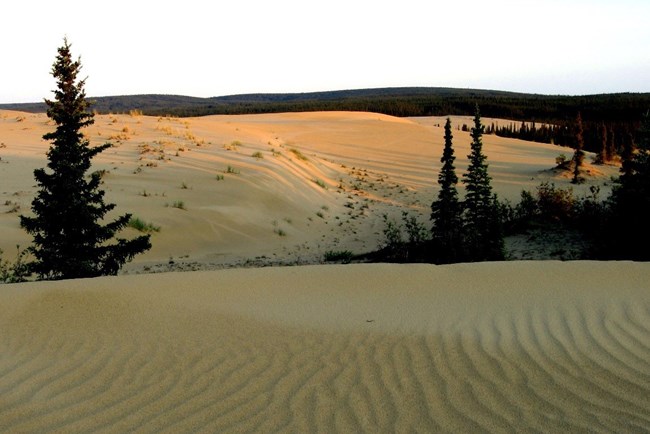Learn about NRCAs
The Natural Resource Condition Assessment (NRCA) Program provides framework, funding, and publishing support to parks to aid in the synthesis and documentation of natural resource conditions. Condition assessment reports are a tool to describe selected park resources, and record a snapshot of their current condition, identify trends, and identify potential or current threats and stressors. Understanding the condition and trend of natural resources is key for parks and NPS planners to appropriately prioritize and allocate stewardship resources.

NPS Photo.
The park is located in the San Luis Valley of south-central Colorado. Great Sand Dunes National Park and Preserve encompasses a representative slice of the characteristic San Luis Valley/Sangre de Cristo Mountains landscape in the Southern Rocky Mountain ecoregion. Because the park and preserve range from valley floor to alpine peak, the park supports an impressive variety of native plant communities within a relatively small area.
Traditional NRCA Report: 2019
In order to better understand the condition of natural resources within the monument, a Natural Resource Condition Assessment was written for the park. National Park Service staff worked with the Colorado Natural Heritage Program to determine the resources most important for this assessment. The NRCA for Great Sand Dunes National Park and Preserve was published in 2019 and evaluates 14 focal natural resources:
- Landscape condition |
- Fire |
|||||
- Landscape composition and connectivity |
- Forest pests and pathogens |
|||||
- Hydrology |
- Native ecosystems |
|||||
- Dune system |
- Endemic insects |
|||||
- Invasive/exotic plants and aquatic species |
- Amphibians and reptiles |
|||||
- Air quality |
- Natural lightscapes |
|||||
- Other species of concern |
- Soundscapes and acoustic resources |
The condition of natural resources at Great Sand Dunes National Park and Preserve is moderate overall. Six resources were given a good condition rating: landscape condition, dune system, hydrology, native ecosystems, endemic insects and night sky; and eight resources were given a condition of moderate concern: landscape condition and connectivity, fire, forest pests and pathogens, amphibians, and reptiles, other species of concern, invasive/exotic plants and aquatics, air quality, and soundscapes. Additional research to clarify the effects of native ungulate grazing, the legacy of historic agricultural use, and the natural disturbance regime that is characteristic of the component ecosystems would be useful. Connectivity of Great Sand Dunes with the larger landscape, although not directly under NPS control, may be of potential management concern if future conditions lead to the isolation of Great Sand Dunes National Park and Preserve within a degraded landscape.
The continued participation of the park and other NPS program staff in regional conservation and management efforts will help ensure continued preservation of the larger landscape. Species-specific connectivity modeling, especially for larger mammals of management concern, may provide additional management insight for desired conditions.
The continued participation of the park and other NPS program staff in regional conservation and management efforts will help ensure continued preservation of the larger landscape. Species-specific connectivity modeling, especially for larger mammals of management concern, may provide additional management insight for desired conditions.
For other reports and natural resource datasets visit the NPS Data Store.
Source: NPS DataStore Collection 7765 (results presented are a subset). To search for additional information, visit the NPS DataStore.
Last updated: February 25, 2022
